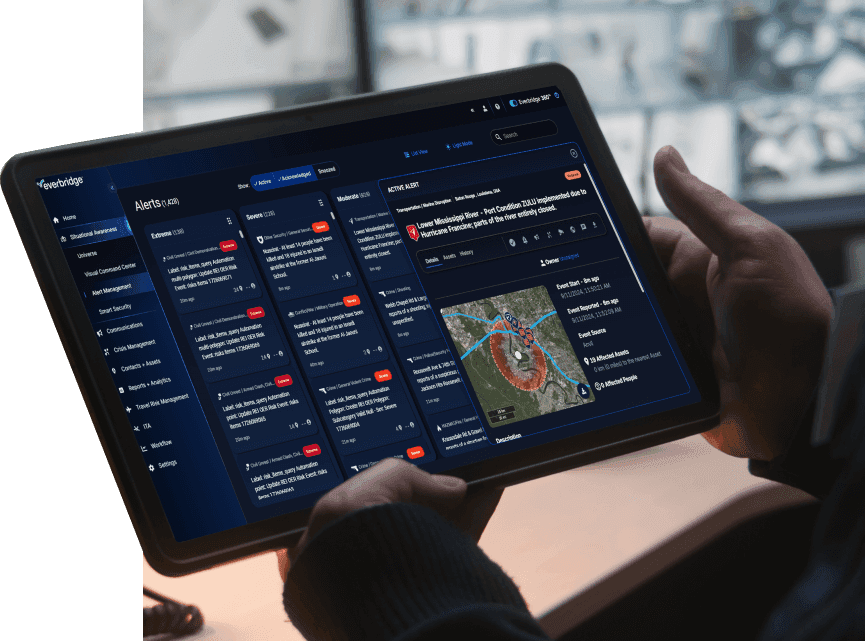Adlan Hussain, Product Marketing
As noted in the Wall Street Journal in February 2023, physical attacks on the U.S. power grid rose 71% last year compared with 2021 and will likely increase this year.
The U.S. power grid is of critical importance to our national security and economic security, but in an increasingly connected world where physical and cyber attacks are becoming more frequent, executives must be aware of the potential risks posed by malicious actors targeting their power grids. In recent years, malicious actors have increased their efforts to penetrate and damage U.S. power grids through both physical and cyber attacks. This has been seen with the North Korean WannaCry ransomware attack on American energy companies in 2021, as well as other attacks on American nuclear and power infrastructure over the past few years. Malicious actors may also target the grid for financial gain or simply for disruption, making it essential for executives to stay vigilant when it comes to protecting their company’s systems from all types of security threats.
What is critical infrastructure protection?
Critical infrastructure protection (CIP) refers to the efforts to safeguard the essential systems and assets that are vital to the functioning of a society, economy, or nation-state. These systems and assets fall within key critical infrastructure sectors that are considered essential to the functioning of a nation and its people. These sectors are typically identified by governments and international organizations and are recognized as critical because they are vulnerable to physical and cyber threats and attacks that could cause significant harm or disruption to society.
The critical infrastructure sectors can vary slightly depending on the country or organization defining them, but generally, they include power grids, water treatment facilities, transportation networks, communication systems, financial institutions, and other critical facilities. These sectors are interdependent and interconnected, meaning that an attack or disruption in one sector can have a cascading effect on other sectors and society as a whole.
The aim of CIP is to prevent, detect, and respond to any physical or cyber threats that may impact the availability, integrity, or reliability of these critical infrastructures. CIP involves a wide range of activities, such as
- Risk assessment
- Vulnerability analysis
- Threat detection
- Emergency response planning
- Cybersecurity measures
What elements of the power grid are considered CIP?
The United States power grid consists of key elements that all need to be protected, which include;
- Generation: The power grid begins with power plants, which produce electricity from a variety of sources, including fossil fuels, nuclear energy, and renewable resources like solar and wind.
- Transmission: Once electricity is generated, it is sent over long distances through high-voltage transmission lines to substations.
- Substations: These facilities step down the high-voltage electricity to lower voltages for distribution to local areas.
- Distribution: Local distribution systems then deliver the electricity to homes, businesses, and other users.
- Control systems: The power grid is monitored and controlled by sophisticated computer systems that ensure the proper balance of supply and demand and help prevent blackouts and other disruptions.
- Workforce: A skilled workforce is necessary to operate and maintain the power grid. This includes engineers, technicians, electricians, and other professionals.
Ensuring the security and protection of these assets is critical for the functioning of society and the economy, and any disruption or attack on these power grid elements can have significant consequences. Therefore, efforts to protect the power grid from physical and cyber threats are a key component of critical infrastructure protection.
What can be done to protect critical infrastructure
Power grid operators must take a proactive approach when it comes to protecting all of the elements highlighted above. Companies should regularly assess and address weaknesses in their systems, adopt the latest technologies, and stay up to date with government regulations concerning critical infrastructure protection.
Fortunately, there are steps businesses can take to protect their operations from attack. The U.S. government has a set of regulations which sets out guidelines for how companies should implement critical infrastructure protection to protect their power grids from threat actors and other accidents that could cause ballistic damage or other forms of destruction to infrastructure and private utilities operations. Companies should strive to comply with these standards in order to remain secure against malicious intrusions and vandalism, both physical or digital.
Technologies such as Physical Security Information Management can be used to monitor their perimeter and detect threats before they have the chance to penetrate the system. Companies should also look into investing in physical security measures such as surveillance cameras, video analytics, perimeter intrusion detection systems and hostile vehicle mitigation systems.
On the digital side, cyber-attacks are becoming more prevalent for disrupting normal operations. Whether intentional harm or a way to try new code, attackers are actively looking at utilities as a way to cripple both the economy and our daily lives. While we saw the effects of the Colonial Pipeline attack, it is now realized the payoff can be beneficial and because of this more vulnerabilities are being sought after and exposed. This can be anything from passwords being leaked to legacy systems that have not been updated. Operators now have more pressure to ensure systems are up to date and there is visibility into all systems while staying current with governmental regulations.
To ensure performance in all aspects of grid operations, technology to facilitate and automate the response to incidents can be put in place with a digital operations platform. Bolstering resilience by assessing, acting, and analyzing incidents, disruptions can be handled efficiently and effectively prior to affecting customers and improving responses to future events.
By taking these steps—and staying up-to-date with government regulations—executives can ensure that their businesses remain safe against any type of attack while continuing to provide reliable service for customers across the country. Additionally, it is important for companies to build strong relationships with public security agencies like the Department of Homeland Security and local agencies to share information on threats both at a national and local level.
Contact us to learn how Everbridge can help safeguard your organization with a digital operations platform.

